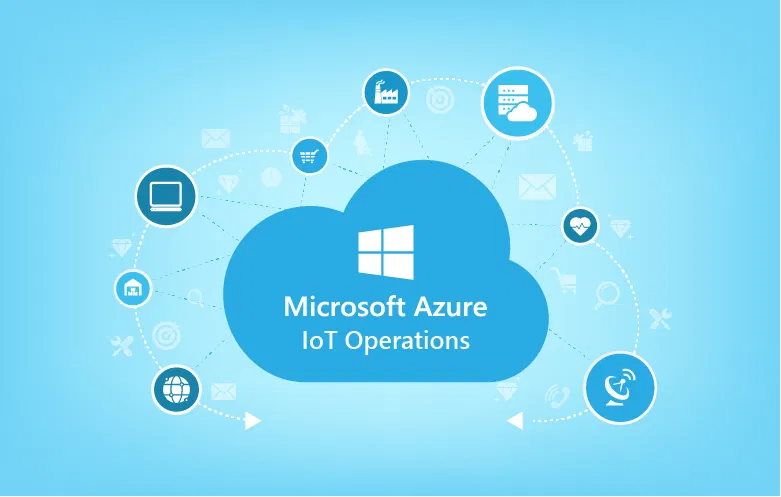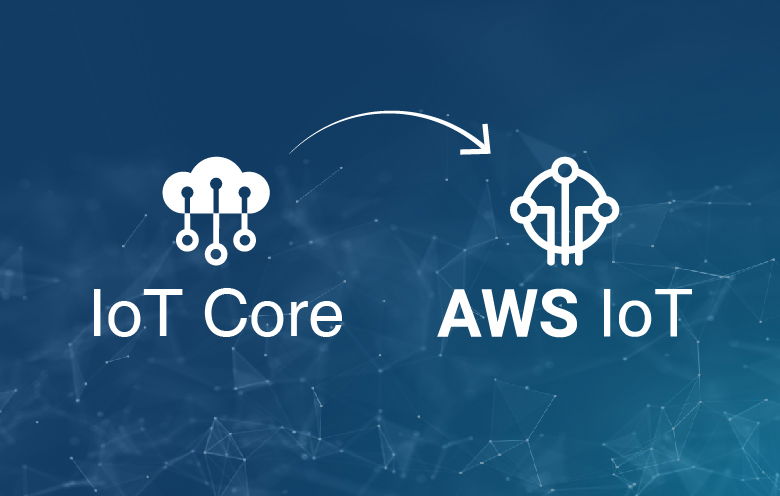We are witnessing a major paradigm shift of businesses and organizations from traditional methods to the latest technology. As the implementation of the Internet of Things expands, the implications for business models innovation are huge. Filling out well-known frameworks and streamlining established business models won’t be enough. To take advantage of new business opportunities, today’s companies have to fundamentally rethink their orthodoxies about monetizing their business.
Why are businesses migrating from traditional business methods to IoT?
The year of 2017 has been the year of Internet of Things. It’s been a major transformation. Almost every industry invested in IoT and some of the leading industries quickly moved to the implementation of IoT solutions to improve their bottom line. Many consumer products, like wearables and connected electronics covered a large part of the market; however, according to IDC FutureScape: Worldwide IoT 2018 Predictions, “By the end of 2020, close to 50% of new IoT applications built by enterprises will leverage an IoT platform that offers outcome-focused functionality based on comprehensive analytics capabilities.”
What could be the reason for this major migration? Let’s have a look at some of the benefits that drive the paradigm shift for most industries;
Increased business opportunities
IoT opened the doors for new business opportunities which in turn helped companies to explore new revenue streams developed by advanced business models and services.
Efficient processes
The data collected by IoT network allowed businesses to be smarter with real-time operational insights, which, as a result, helped them to minimize the cost related to inventory management, time to market, and downtime.
Enhanced asset utilization
Implementation of IoT improved the assets tracking (equipment, machinery, tools, employees etc.) with the help of sensors and other devices, which helped organizations to locate, monitor, and maintain assets improving the overall asset utilization in the industry.
[workshop_avnet_1920]
Increased productivity
IoT provided just-in-time training for employees, improved labor efficiency, and reduced mismatch of skills increasing organizational productivity.
The above mentioned reasons were the major drivers of this transition from traditional business processes to the implementation of IoT at a global level.
The IoT based models we shall be focusing are as follows;
- Subscription Model
- Outcome-based Models
- Asset Sharing Model
- IoT-as-a-Service
Let’s have a look at these models one-by-one and see how you can monetize your business from them.
Subscription model
Overview
IoT has reached almost every sector of the market and is helping organizations to improve their business processes, decision-making capabilities, and profit coefficient. However, delivering merely an IoT-enabled solution to the client can be a one-time monetizing solution. What if one wants to keep on the money rolling from the same solution? To monetize your business with the same IoT-enabled solution, an IoT-based subscription model can be the option to look up to.
The IoT subscription model allows business heads to generate recurring revenue through connected devices. In other words, instead of having a one-time sale, you can offer a regular subscription to the client where a fee is charged for periodic usage.
Challenges
Having an IoT subscription model is one of the best ways to monetize your business. It offers a significant number of advantages and is a great path for clients to gain access to the product, solution, or information that might usually be out of their budget. Yet, there are numerous challenges a business has to overcome while implementing the IoT subscription model. Some of these challenges are;
Customer management
A subscription model can have multiple users at any point of time. Managing records of all the subscribers is something businesses have to deal with. Inaccurate customer management can damage the business-client relationship. Employees may not be aware of the level of subscription done by the client, whether they are on a trial period or what the tenure of the customer’s subscription is.
Automatic invoicing
Invoicing is also a major issue that organizations tackle while implementing an IoT-based subscription model. It becomes an even bigger challenge when customers use different payment options, subscription levels, or add-ons.
Plan management
Managing the subscription plan is yet again very crucial for businesses that are willing to implement IoT-enabled subscription models. Keeping track of the initial and terminal dates of the plan, the price of the plan and what all services should be included in the particular subscription, must be carefully analyzed and offered smoothly.
Once these challenges are tackled and taken care of, the subscription model offers a pool of benefits that can help you in monetizing your business and adding significant value to it.
Let’s have a look at some of the benefits offered by IoT-enabled subscription model;
Benefits
The IoT-enabled subscription model allows businesses to have recurring revenue allowing them to foster an active relationship with their clients. This model breaks the barrier of “throw-their-product-over-the-wall” as they are able to gather more data that improves the decision making for that particular customer. The IoT-enabled subscription model also provides more valuable features tailored specifically for the client.
Outcome-based model
Overview
IoT-enabled outcome-based business model transits organizations from simply selling a product or service to the client to delivering the result(s) they are seeking for. This is an innovative business model where the client side is kept away from the hard work of collecting, analyzing, processing, and generating the output and charge for the outcome which they were willing to have.
Challenges
The major bottleneck in implementing IoT-enabled outcome-based business models is the changes required in infrastructure or current business processes. Standardization of the price and balancing the quoted price to the client and the actual cost involved in generating the desired outcome is yet another issue that has to be addressed by companies. Delivering safe, pure and unaltered result is also something a business has to take care of for this model to monetize the business successfully.
On overcoming these challenges, the outcome-based IoT business model offers numerous benefits to businesses.
Benefits
Higher margin
The outcome-based business model allows businesses to use their own processes and tolls to derive the client’s desired outcome. This, as a result, provides a service provider with the flexibility of using the existing infrastructure and already available tools. Doing this improves the profit margin of the business.
Reduced negotiation cycle
The IoT-enabled outcome-based business model grants a service provider privilege of fixating the price of the final output. This allows them to eliminate the time-consuming negotiation cycle for delivering the outcome.
More satisfied customers
It’s a fact that people look and appreciate the outcome rather than the hard work that a business had to do. When a business delivers a quality output that was demanded by the client, it builds a mutual trust between the two. And, with a little bit of explanation of how the business achieved the goal, increases the number of satisfied customers.
Asset sharing model
Overview
This is not a new concept. One or the other time, every business might have used a business model that might be based on asset sharing. So, what’s new? Now businesses offering IoT solutions can also use the asset sharing business model.
The model allows businesses to share their costly IoT-enabled assets with other business entities. The organization sharing the asset can charge for the asset-based on the usage, time for the usage, and nature of the usage.
Challenges
Security
Threats like theft, damage, and data manipulation are prime concerns for the business to implement the IoT-enabled asset sharing model.
Mutual arrangements
Setting up terms and conditions for the utilization of assets can be a tough nut to crack. Companies have to come to an arrangement for the usage, tasks, time and number of assets that will be shared for smooth and hassle-free working.
Configuring the asset
Configuration of the IoT-enabled asset according to the business with whom it shall be shared becomes quite challenging when it has to be done without disrupting one’s own data flow and business processes.
Benefits
The IoT-enabled asset sharing business model is one of the best methods of adding monetizing value to your business. The model allows the business to reduce the cost of usage and maintenance which in turn elevates the profit margin.
IoT as a Service model
Overview
An IoT-as-a-Service model is the most extensively used business model in the market today. In this model, a business provides its IoT-enabled solution on lease and generates revenue. The model is not limited exclusively to software or physical products, “things” like information and data; leads or results generated from the data can also be leased in this model. The IoT-as-a-Service model can be considered as a part of the above mentioned subscription model and can generate recurring revenue.
Challenges
Compatibility
In an IoT environment, the data capturing majorly occurs through various sensors, which are connected IoT gateways. While renting an IoT enabled product or solution, the compatibility at the client side is very crucial for optimum productivity.
Incorrect data capture
As a result of some untoward incidents, anomalies can be generated during run-time and may cause sensors to capture incorrect data.
Data Security
With occurrences of many ransomware attacks recently, enterprises and customers are apprehensive about data security. There is also a chance of corporate espionage to gain intellectual property. Hence, IoT service providers need to ensure that their data is safe.
Benefits
IoT-as-a-service has a differential regarding costs since it usually resides in a shared or multitenant environment where the hardware and software license costs are low compared to the traditional model. A business can generate revenue by upgrading the existing solution used by the client. Costs and efforts associated with upgrades can be remarkably reduced which in turn improves profit margin of the business.
Conclusion
Today IoT has reached the pinnacle of inflated expectations of emerging technologies. However, monetizing values for the business cannot be improved by implementing IoT to the business process. There’s always room for something better or something extra in the market. With the implementation of various IoT-enabled models, a business can successfully elevate its profit margin and expands its working.



